Rebuilding Man Utd’s Midfield: Part 2 – Build up DM targets
If you missed the first part of this series, you can catch up on it here: Rebuilding Man Utd’s Midfield: Part 1 – Profiles, tasks & gaps
In part 1, I defined 6 broad tasks of a midfielder, scored the long-term 4 members of Manchester United on those tasks and created 2 player profiles based on the gaps that the club should target to create the ideal 6-man top team midfield – Build up DM and Hybrid DM. Today, we’re going to discuss the shortlist and some mini reports for the Build up DM role.
The Build up DM Shortlist
At the end of part 1, I previewed the data-led process that led me to create scored for both roles based on the 23/24 season stats of all top 7 league midfielders who have played more than 7 league 90s. It looked something like this.

From here on, I spent a lot of time cleaning the data. Steps I undertook:
1) Removed non DM players like Bernardo Silva, Gavi etc.
2) Removed impossible top team players like Rodri, Rice etc
3) Set a max age limit of 26. Part of the solution is to lower the average age of the midfield and invest in about-to-peak starlets who can win with us at their peak
4) Saw a lot of 90s from the resulting list to divide the remaining into Build up DM and Hybrid DM just to add an eye test layer to what the data suggests. There were a few minor changes.
5) Created a 16-member Build up DM list and 16-member Hybrid DM list
So without further ado, here’s the Build up DM shortlist.

Lots of interesting names here. Now, which ones should I cover mini reports of?
I have already covered some players in previous articles and scouting pieces while I’m not sure on some others moving:
- Individual reports on Boubacar Kamara and Cheick Doucoure before they moved to their current EPL clubs (Big missed opportunities that I had advocated for). Not much has changed about their profile
- Florentino Luis in last year’s DM article and Zubimendi in last year’s DLP article
- Perrone being a Man City loanee makes a sale to us tough, so skipping him. Lovely player though
- Rovella could make his move permanent to Lazio by triggering the €20m obligation to buy, so skipping him
- Lots of talk around Barrenechea either being recalled to Juventus or used as a bargaining chip with a Serie A club to buy another player. I doubt we get him in all of this confusion
- Angelo Stiller just recently moved and has stated his pleasure at being at Stuttgart or moving back to Bayern in future. I’m just not sure he moves to the EPL anytime soon
So, going from the top, the first 5 realistic options are Exequiel Palacios, Joao Neves, Daniel Boloca, Aster Vrankcx and Morten Hjulmand. I’ll be covering each in more detail.
Exequiel Palacios, 26, Bayer Leverkusen

Career: A youth product of River Plate, Palacios spent 6 years at the club at senior level with slowly increasing appearances. He signed for Leverkusen in the middle of the 19/20 season. After a slow 1.5 years, Palacios enjoyed regular gametime from 21/22. He’s been slowly moving from an attacking midfield role to a box-to-box role to a now holding playmaker role under Xabi Alonso and has found great success in the latter in recent years.
Pros:
- Defensive intensity
- Pass volume and retention
- High progression, playmaking power and passing range
- Pressing and interception IQ
- Press-resistance and strength to hold off
- Carrying and ball control in tight spaces
Cons:
- Injury prone
- Aerial duels
- Front-footed defending
In possession: Palacios is a gem in possession. He’s the rare type whom you can repeatedly pass to and even when he’s under immense pressure, he’ll turn, pick the right decision and use his technique to safely progress the game. He almost never loses the ball and mixes high retention and safety with high vertical power and playmaking. Whether it’s a switch, a through ball to release a wide player or a vertical punchy pass to an attacker, he has the full range of passes once he receives cleanly and picks his choice. Very Toni Kroos like in possession.
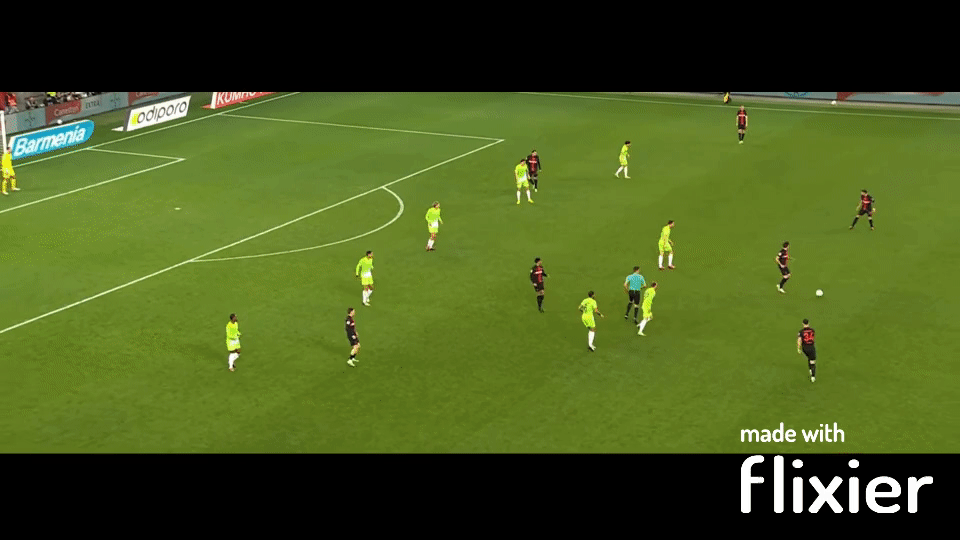
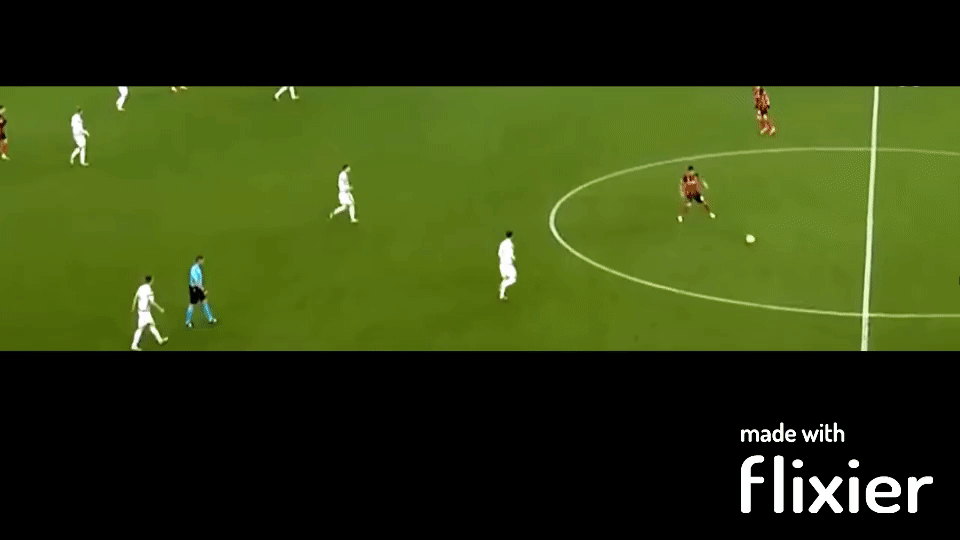
Out of possession: Palacios is a very intense and able defender. He’s a good ground dueller and puts in a lot of tackles and interceptions. He’s a very aware presser and joins his team’s counter-press intent smoothly. He rarely gets dribbled past when faced with a clear opponent. I do feel that there are some gaps in the way he recovers to shield the defence. His front-foot style sometimes sees him vacate the deepest slot or drift sideways to win the ball back. It makes sense in Leverkusen’s system of an equal pivot ahead of a back 3, but I’d be wary of his positioning as a single pivot ahead of a back 4. He can also be beaten in aerial duels but tries to make himself a nuisance. Reminds me of Ander Herrera out of possession.
Others: Finally, his injury record isn’t great. As per transfermarkt he has suffered 6 injuries in the last 2.5 years that made him miss 166 days and a lot of them seem to be muscle-related ones, which isn’t a great sign.

Verdict: Palacios is a gem on the ball and a brilliant front-foot defensive midfielder. The doubts around conservative anchorman actions, aerial ability and fitness are the reasons I’m cutting a few marks.
The Devil’s DNA Score: 7.5/10
João Neves, 19, Benfica

Career: A youth product of Benfica, Neves started getting chances in the senior team at the young age of 18 last year post the departure of Enzo Fernandez and impressed in the second half of the season. This season he’s seen a lot more gametime as a regular starter and is already attracting the attention of Europe’s elite.
Pros:
- Pressing and tackling power
- Mazy vertical carrying
- Ground and aerial duels
- Defensive coverage
- Passing involvement and reception
- Progressive passing and range
- Tactical understanding and movement
Cons:
- Consistency
- Price tag
- Decision-making sharpness
- Timing of ball release
In possession: Watching Neves in possession is a treat. His incredible ball control and dribbling is noticeable first. He is highly press-resistant and can wriggle his way out of any situation. He’s a proper playmaker and has the range and playmaking brain to consistently progress and find advanced players or safely retain the ball. I would say he’s not as metronmous as some of the others on this list and can pick the wrong pass or hold on to the ball longer than expected at times. His tactical understanding already seems very mature. Able to drop into CCB/LCB areas or receive between lines or drift wide and receive, he is constantly moving and finding space which is shown by his high passes attempted stat. Reminds me of Thiago in possession.


Out of possession: I’ve come away more impressed with Neves’ defending than attacking. Don’t be fooled by his stature. Neves is a world-class dueller. His pace, energy and body usage ensure he dominates ground duels while his agility, jump and heading technique make him aerially strong. He has high defensive coverage which coupled with great positional and pressing IQ make him a complete nuisance to deal with. Even the deeper anchor duties are performed well by him as he can shield the defence, intercept cutbacks and defend transitions comfortably. Neves’ jump and agility make his height a non-issue. Neves’ speed, ground-coverage intensity and physicality make his short stature on ground a non-issue. This is a top defensive midfielder. Feels like peak N’golo Kante in defence.


Others: Neves has the typical Benfica release clause of 120m with a contract till 2028. Even if Benfica reduce this, I don’t see why they would sell for less than 80m given his talent and demand.
Verdict: Neves is even better out of possession than he is in possession, and he’s absolutely divine in possession. Cutting 1 mark coz of decision-making and consistency which are a function of age largely and the transfer fee.
The Devil’s DNA Score: 9/10
Daniel Boloca, 25, Sassuolo

Career: Boloca is a Juventus youth product, who played for a number of Serie D teams before singing for Serie B club Frosinone. At Frosinone, Boloca quickly became a regular and eventually was one of the protagonists of the team that won the 2022–23 Serie B title under head coach Fabio Grosso. In summer 2023, Boloca joined fellow Serie A club Sassuolo where he’s been impressing as a starter.
Pros:
- Press-resistance especially back-to-goal
- First touch, ball control and carrying even in tight spaces
- Passing technique and range
- Passing security and circulation
- Positioning and covering IQ
- Physicality to duel/press and not get dribbled past
- Appreciation of passing angles and pass empathy
- Tactical and off-ball movement IQ
Cons:
- Not a great final ball player
- Not a big goal threat via shooting or attacking movement
- Aerial engagement
- Top speed and agility
In possession: Boloca is the type of midfielder you can watch all day. Inexplicably he combines the glide and grace of a gifted dribbler and passer with the robustness of a classical defensive midfielder. You’ll often see him receive back-to-goal under pressure, turn his man, carry in a gliding fashion and release a pin-point pass with perfect power and curve for his teammate when Sassuolo build up. Even against tough opposition and in the end of games, the consistency and success of these actions remain as high as ever making him feel like a very mature and seasoned playmaker. The only con would be that he’s not a big final third threat with his shooting, final ball or vertical carrying into dangerous areas, but that doesn’t matter much for our build up DM role. Reminds me of Marco Verratti on the ball.
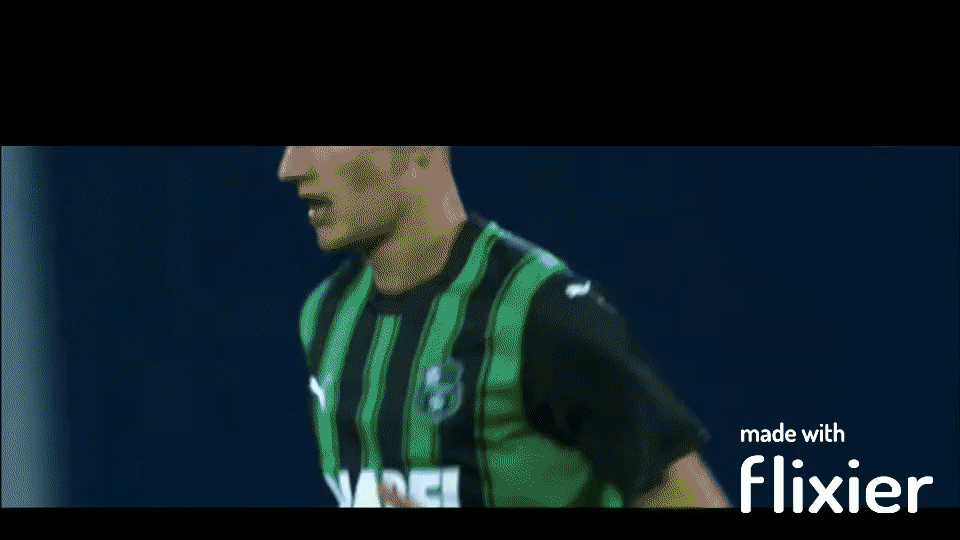

Out of possession: Without the ball you’ll also often see him use his awareness to cover spaces and physicality to tackle opponents as well. I love the way he uses his whole body to barge into players, unsettle them or tackle cleanly. He’s not the fastest player on the pitch by any means but It’s not easy to dribble past Boloca thanks to his combination of physicality and positioning sense. He takes up excellent shielding positions just ahead of the center-backs and is always in the right position to block, clear or intercept dangerous opponent attacks. One slight con is that he doesn’t engage aerially as enthusiastically as he should. He often just tries to disbalance his marker without jumping properly which could be a function of lack of agility and jumping power but he largely manages due to his physicality.
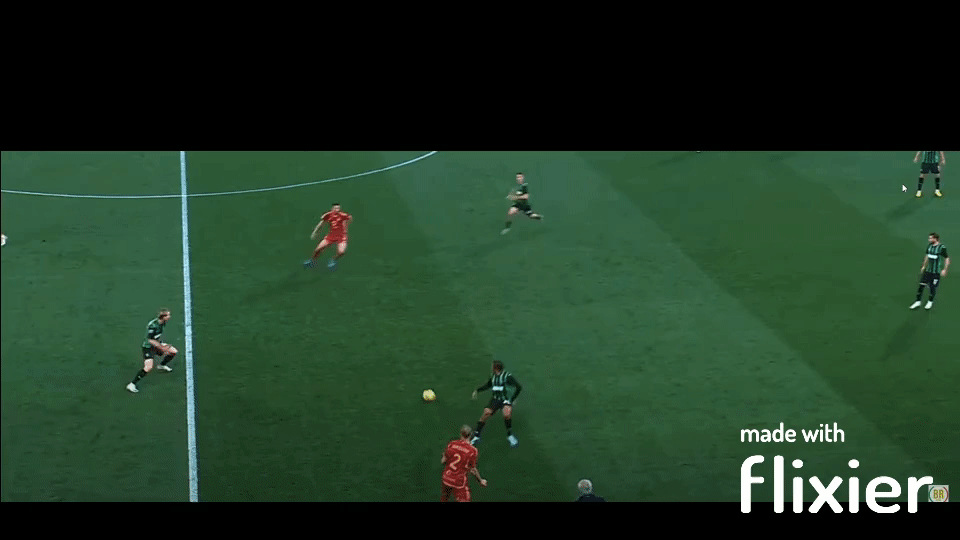

Verdict: The only reason Boloca’s stats don’t stand out is because Sassuolo are battling relegation. I’m confident that in a better team these stats scale up to elite level. He’s almost everything we need in and out of possession and the few gaps of quickness, agility and final third power can easily be mitigated by his role and other strengths. A winner for me, especially if the price is low.
The Devil’s DNA Score: 9/10
Aster Vrankcx, 22, Wolfsburg

Career: A youth product of Mechelen, Aster was noticed by Wolfsburg in 2021. He had a decent first season for Wolfsburg but they decided to loan him to AC Milan in the following year, a move that didn’t result in much gametime. But on his return to Wolfsburg at the start of the 23/24 season, Aster claimed the starter spot in the deepest role.
Pros:
- Imposing physique that he uses well in and out of possession
- Press-resistance and technique to navigate tight spaces
- Pressing and ball-winning IQ + intensity
- Upper body strength and dribbling technique make it hard to win ball off
- Off-ball movement to receive in deeper or advanced areas
- Ability to defend large spaces with body span and engine

Cons:
- Passing vision and creativity
- Passing progression
- Top end speed and agility
- Verticality and range of carrying and passing
- Goal threat and shooting
In possession: Aster is very good in close spaces, being able to consistently receive under pressure in tough central areas, turn and beat his man before passing safely and ensuring his team doesn’t lose the ball. Within these set of actions, Aster is as good as they come. But it’s beyond this where he has more to improve. His ability to be vertical and progress the game either via switches or through balls or slick grounded passes to attackers needs work while his carrying is also very reliant on his physical ability to power past his man and lacks range of usage. His shooting and box-crashing threat is also low. Reminds me of Naby Keita in possession.
Out of possession: His physicality causes a lot of problems and that combined with his tactical intelligence are the reasons he is a good ball-winner and is usually at the right place to intercept, block or tackle. But he does lack that extra agility which proves to be an issue when faced with top dribblers like Musiala and results in him getting a little leg-tied. On occasions, his average acceleration results in him being late to block a quickly played pass or cross. Feels like Axel Witsel out of possession.
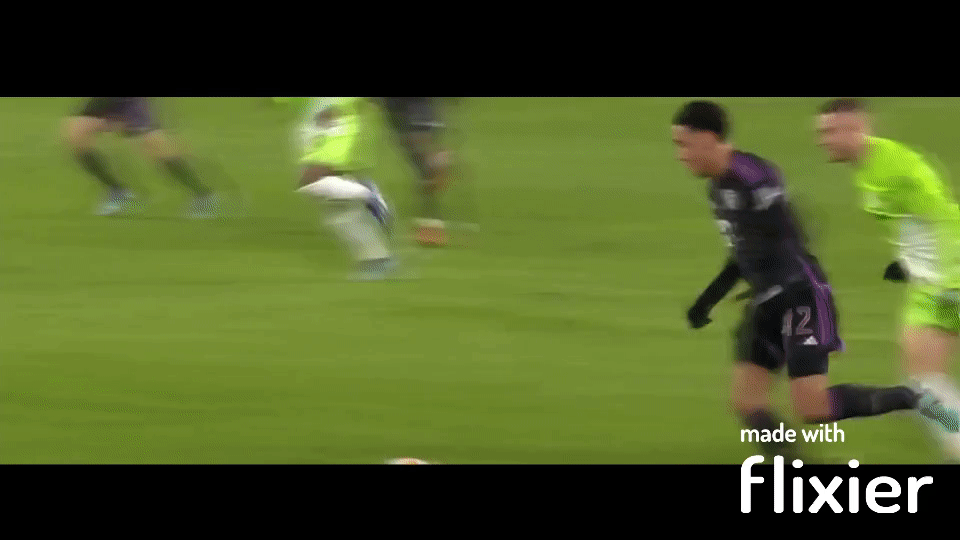
Verdict: I’m not surprised Aster ranked well for the things we were looking for. On paper, he is great at P1 and D1 actions. But his overall package and other attributes didn’t add as much as I would have hoped. This is why we need to dive deeper after shortlisting via stats. There are visible limiters to being a world-class starter for Manchester United. But he’s 22 and could improve more too. All in all, I think there are better options but I wouldn’t mind a punt on Aster if he’s available for as cheap as rumoured. That would safeguard us in the situation he remains at his current level (aka Man Utd backup).
The Devil’s DNA Score: 7/10
Marten Hjulmand, 24, Sporting CP

Career: A Copenhagen youth product, Hjulmand’s first 5 senior years saw him function as the mainstay of Admira Wacker for 2 years and Lecce for 3 years. His final season with Lecce after they got promoted to Serie A especially grabbed a lot of attention and Sporting moved for him in summer 2023 as a Ugarte replacement. Within less than a year, Hjulmand has become a key member of a high-performing Sporting side.
Pros:
- Ground coverage and physicality
- Positioning and awareness
- High volume retention passing
- Ground duels
- Off-ball movement to free himself and receive
- Wide combination play and crossing
- Ball shielding and foul-drawing
- Great mix of aggression and composure when defending
- Clean switches and lobs when in space
Cons:
- Aerially suspect
- Vertical passing/carrying progression
- Final third entry and creativity
- Top end speed and agility
- Too safe under pressure especially back-to-goal
In possession: Hjulmand does what we needed of our Build up DM well. He is very consistent and mature with his receiving, carrying and passing without being fantastical at any of it. He won’t be gliding like Frenkie De Jong or creating expansively like Pirlo but he keeps things sage and ticking in metronomous fashion. When in space, he does execute some nice clean switches, long balls and through balls but that isn’t his primary intent, especially when under pressure. He does lack a bit in terms of creativity and vision while his go-to move when back-to-goal and under pressure is to pass back safely, so don’t expect heavy progression or dribbling. But he has a good ability to shield the ball or draw a foul using his body expertly, so these instances rarely lead to any issues. He’s a nice pass-and-move player and likes to create triangles and combinations. Especially when these are in wide right-sided areas, he can put a nice cross in too. Very much like Pierre-Emile Højbjerg in possession.
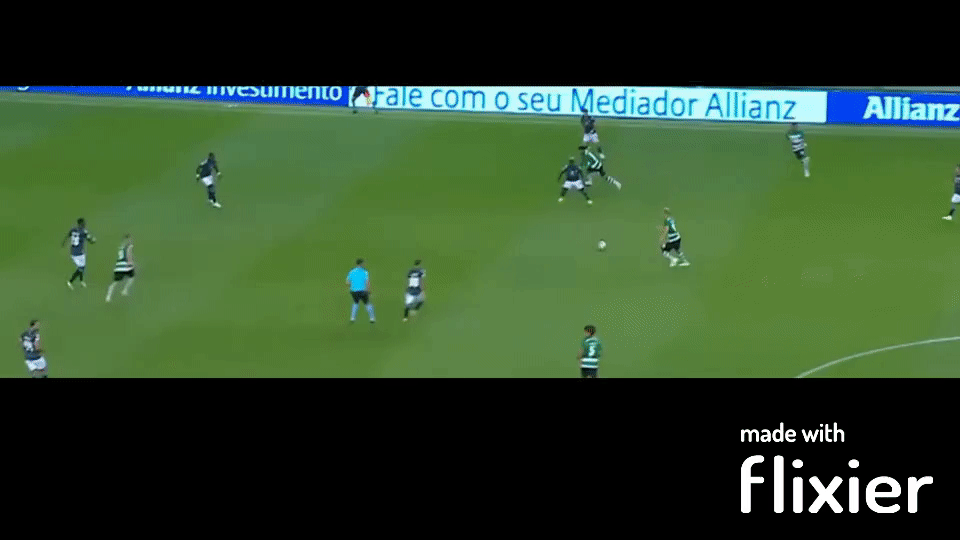
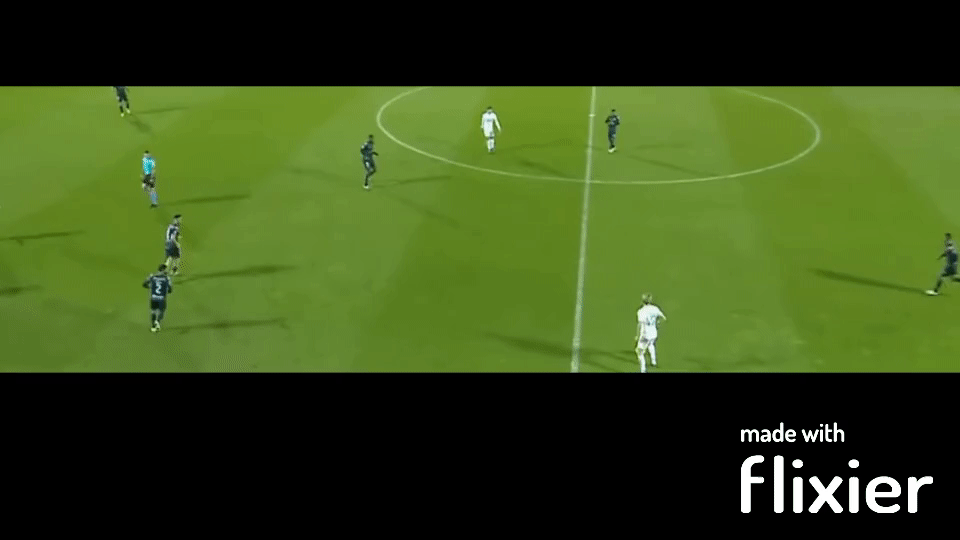
Out of possession: This is where Hjulmand really shines. He’s a perfect mix of a terrier who’s constantly tackling, pressing and being a nuisance and also a composed high IQ defender who intercepts, shields and covers with a very nuanced understanding of space. He plugs gaps proactively, senses danger like it’s first nature to him and uses his physicality to come out better in duels time and time again. Sporting’s tactics also leave him with a lot of space to cover as he’s often the lone DM standing in a high-press tactic. But he still manages to cover space expertly, defend transitions, stop dribblers and clear danger from his box. My only con would be him not having the jump and agility to win aerial duels consistently, which is a shame given his frame. Reminds me of Patrick Vieira defensively.
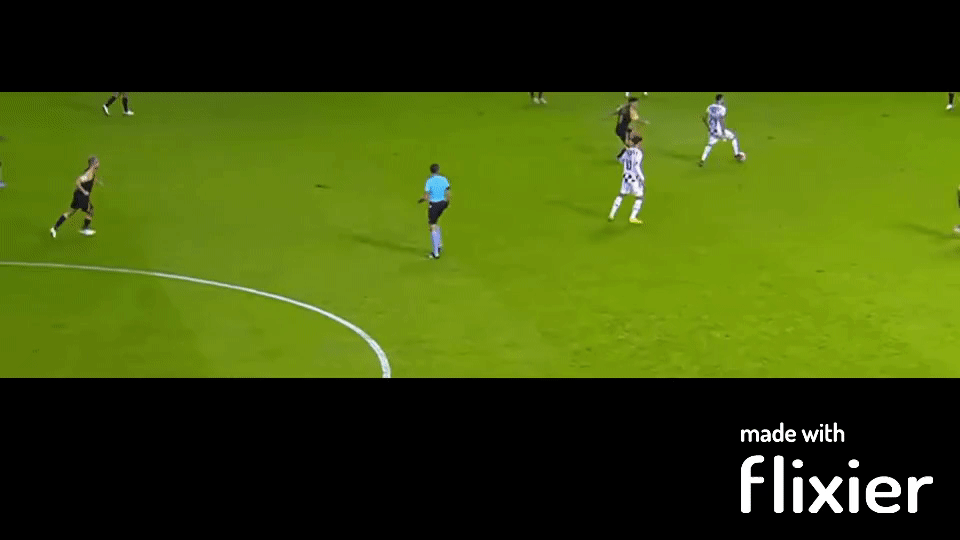
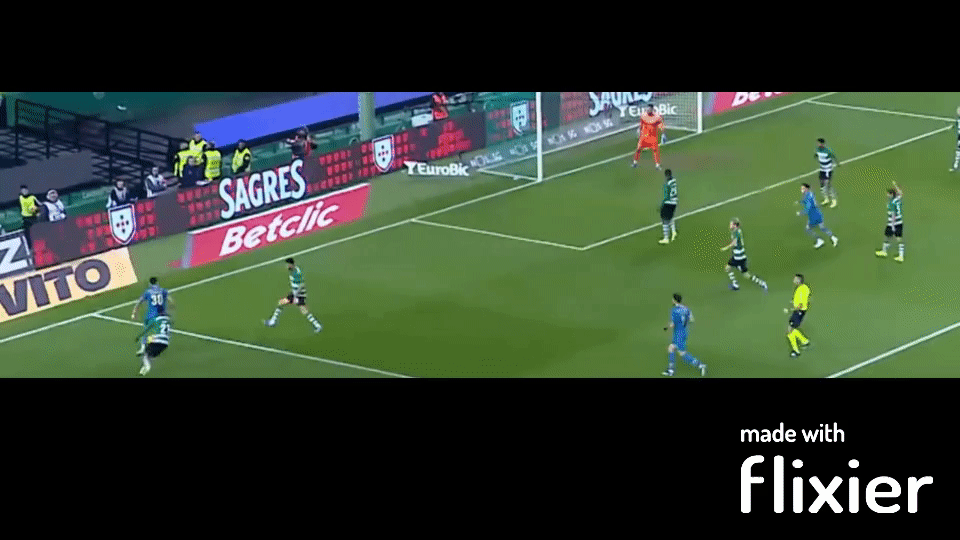
Verdict: Defensively, Hjulmand is almost everything you want in a DM while in possession he ticks the basic criteria of what we wanted in terms of retention, circulation and safety. I’m going to cut two marks due to the lack of vertical progression, aerial prowess and creativity.
The Devil’s DNA Score: 8/10
To sum up the Build up DM targets, I came out most impressed with Joao Neves and Daniel Boloca. The former is a superstar but so is his fee. Boloca feels like an absolute no-brainer and I’d start putting low bids on him immediately if I were Manchester United. After them, Hjulmand is a superb no-nonsense option. Palacios can do the job as well, with a few adjustments to cover what he can’t do. I’d keep Aster Vranckx as the last option with caveats of his ceiling.
In the final piece of this 3-part series, I will take a look at the Hybrid DM list before spending some time on the ideal Build up DM + Hybrid DM combination that would make Manchester United’s midfield elite again.
Previous part: Part 1 – Profiles, tasks & gaps
Next part: Part 3 – Hybrid DM targets
If you’re here from any other place other than Twitter then follow me on @TheDevilsDNA and interact with me on there.
(All stats from Opta via fbref.)





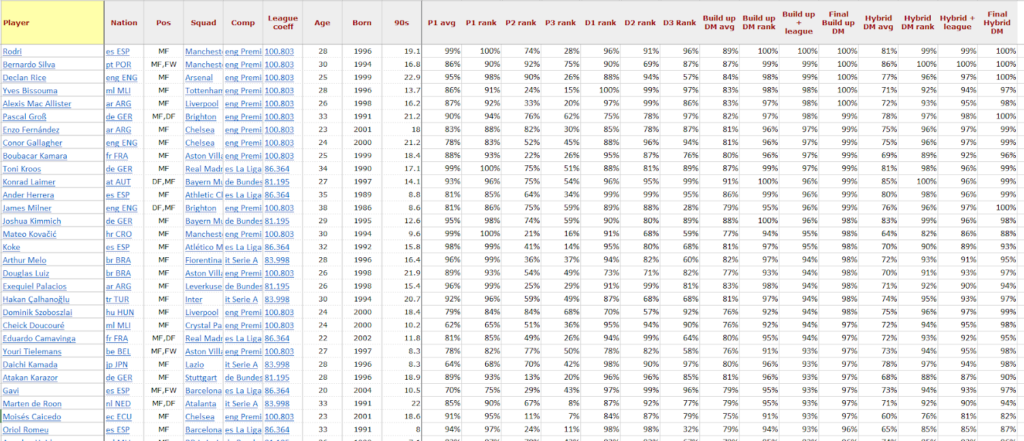
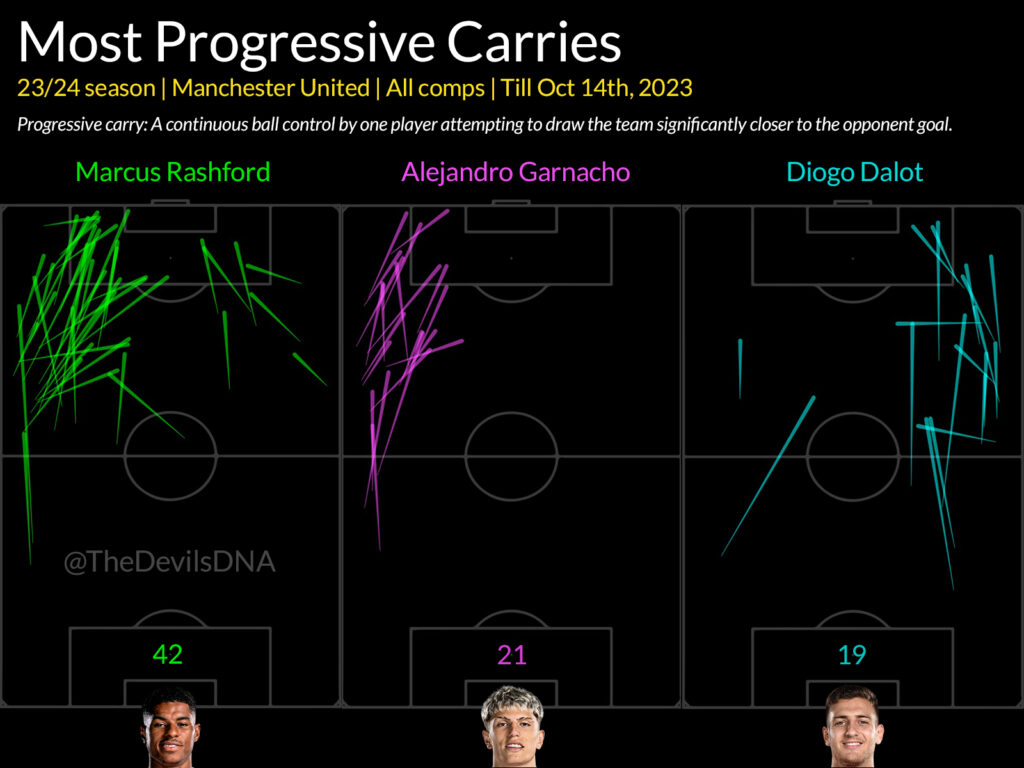
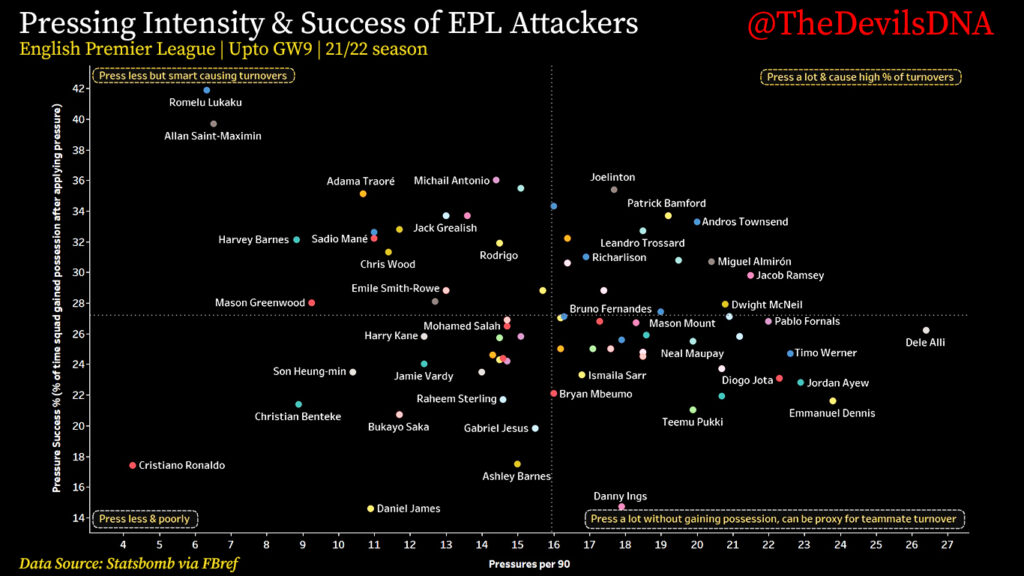

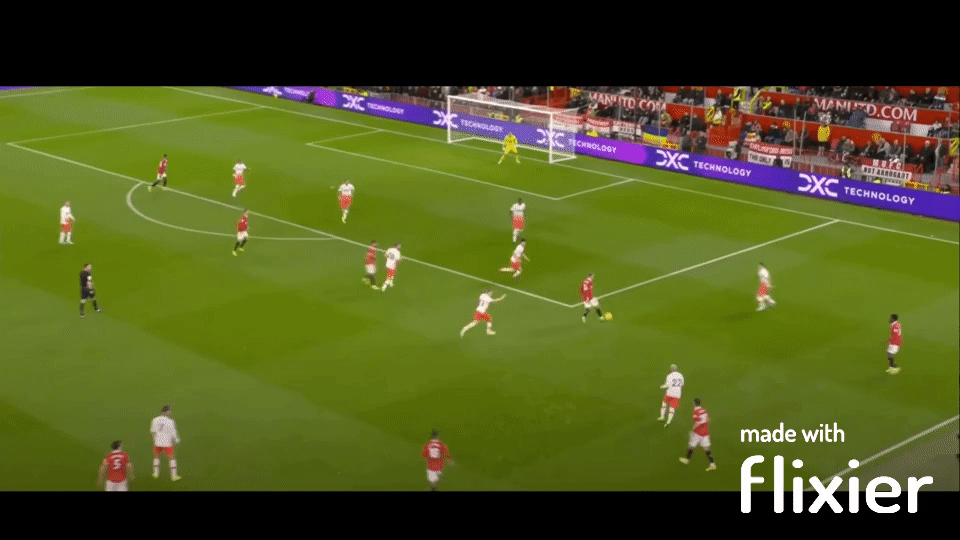
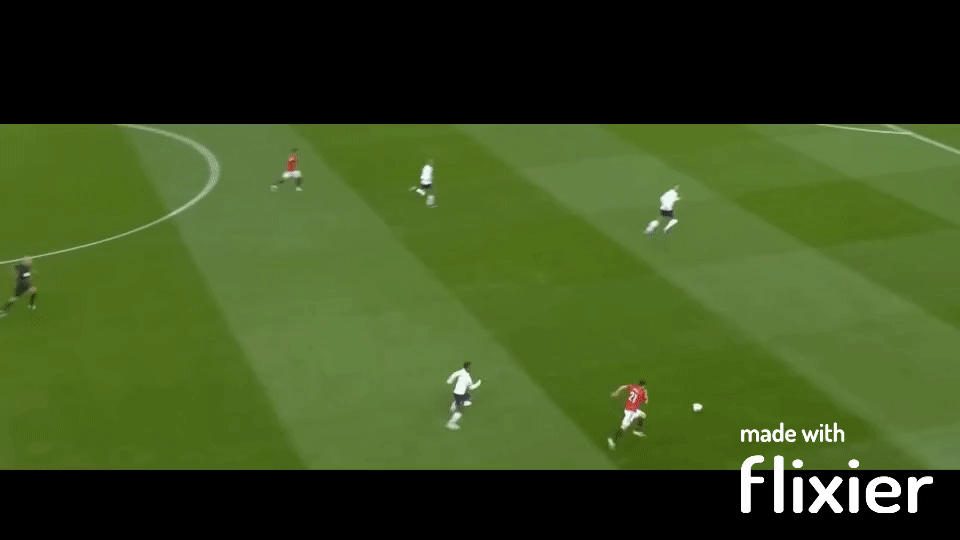
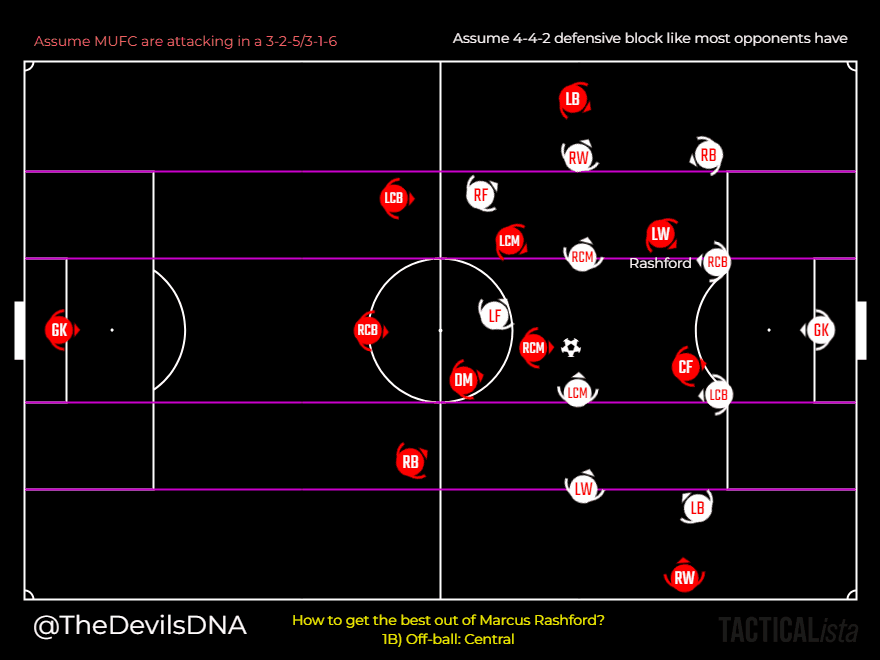
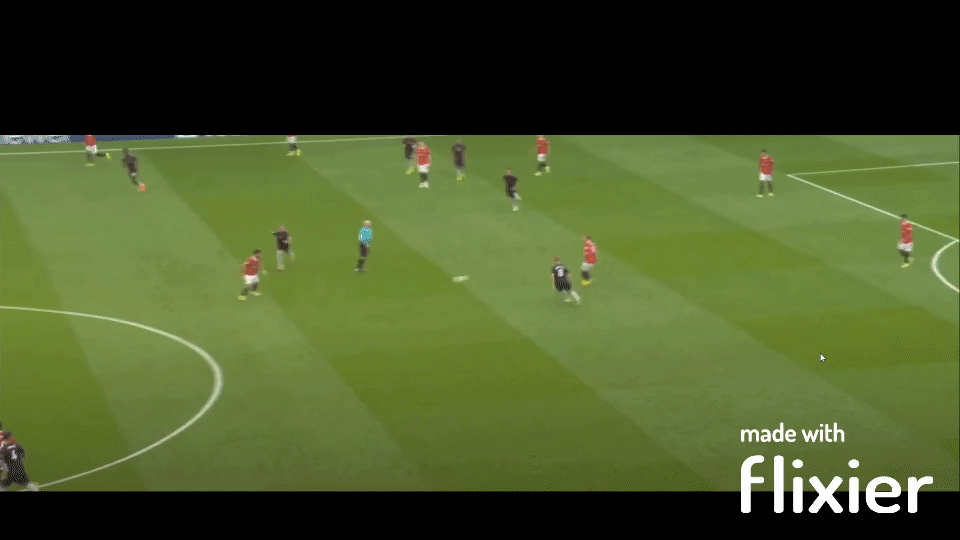
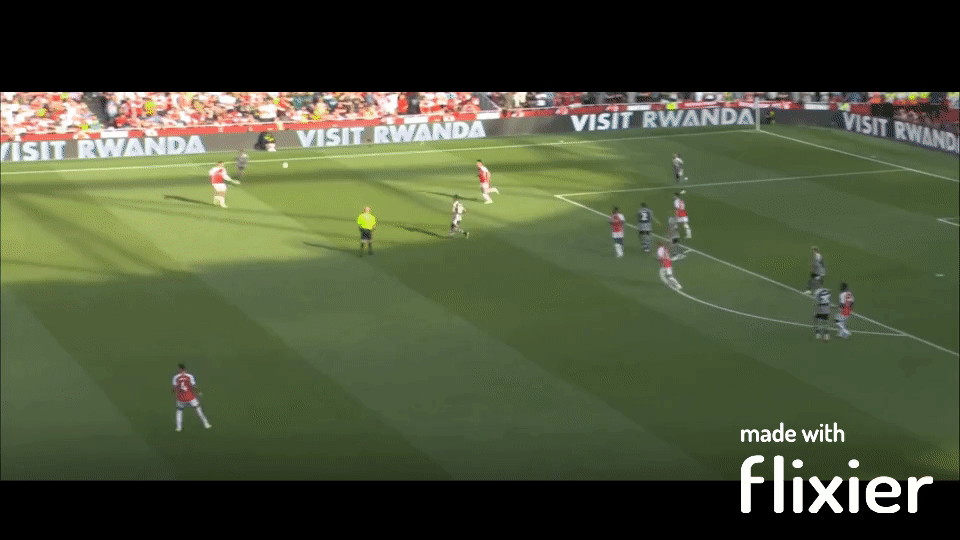
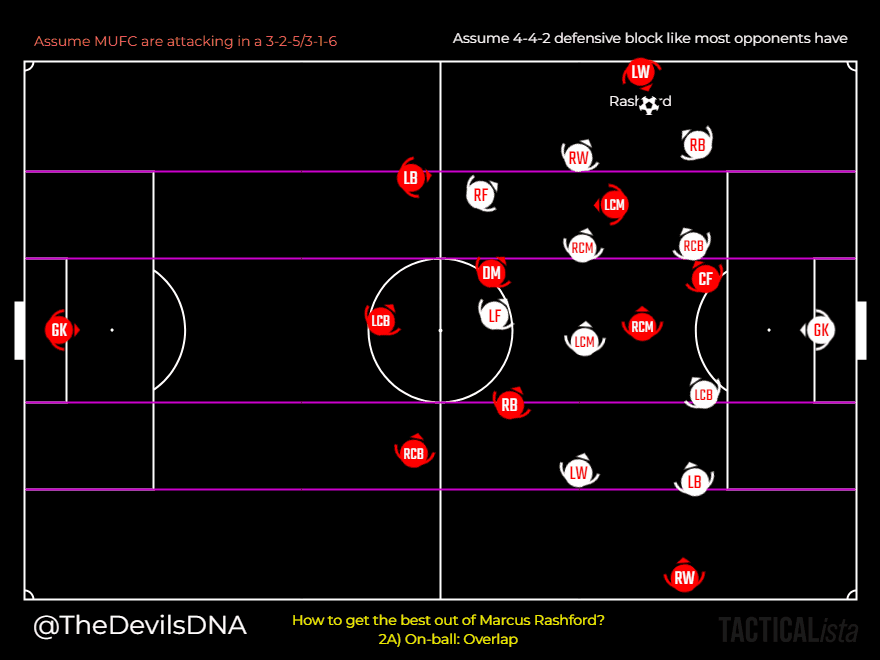
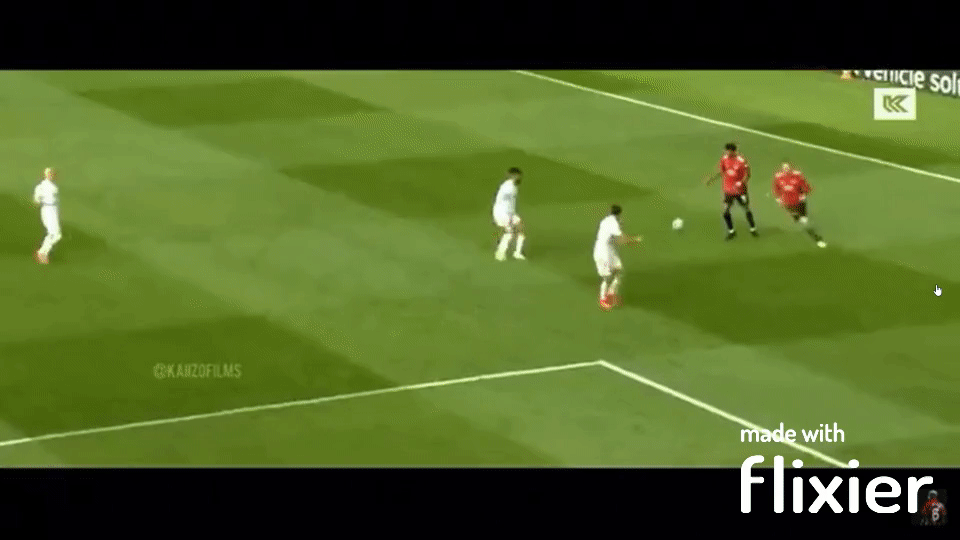
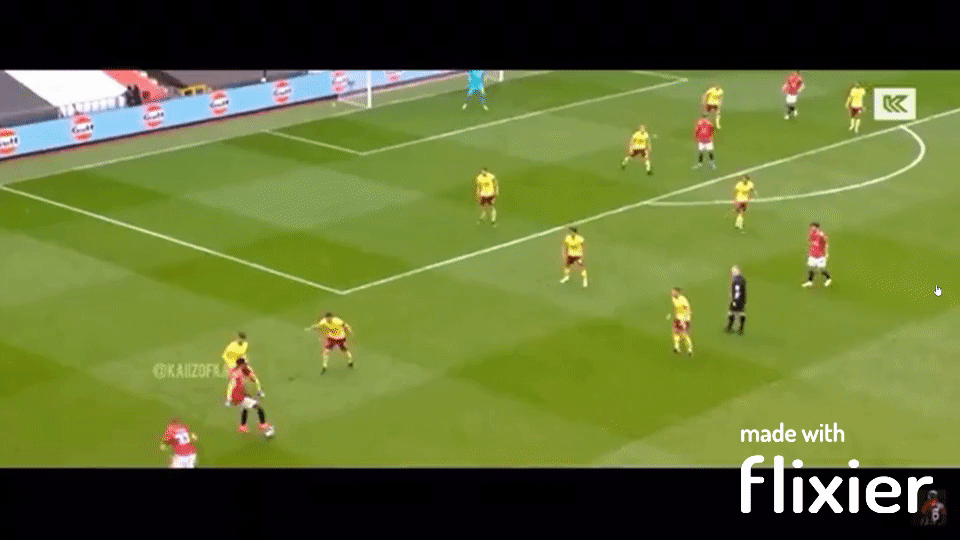

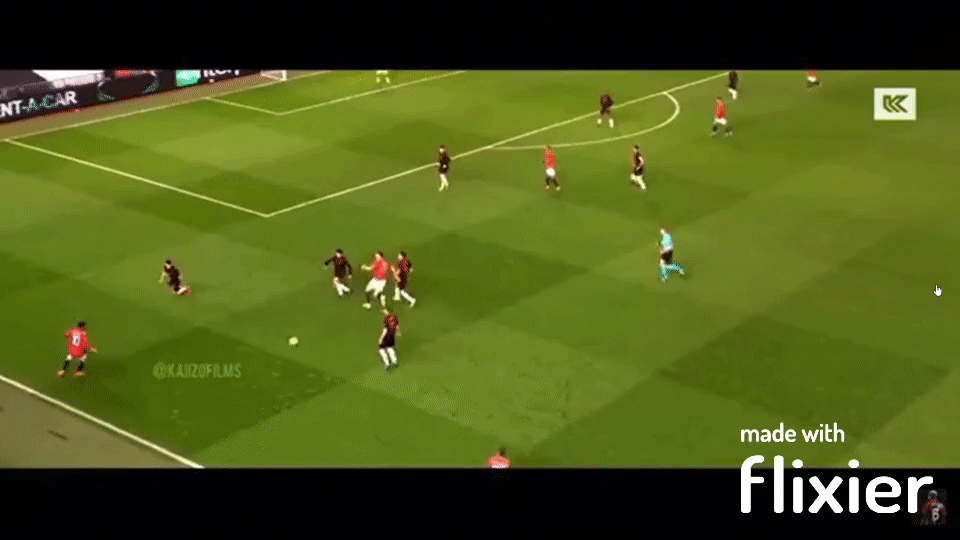

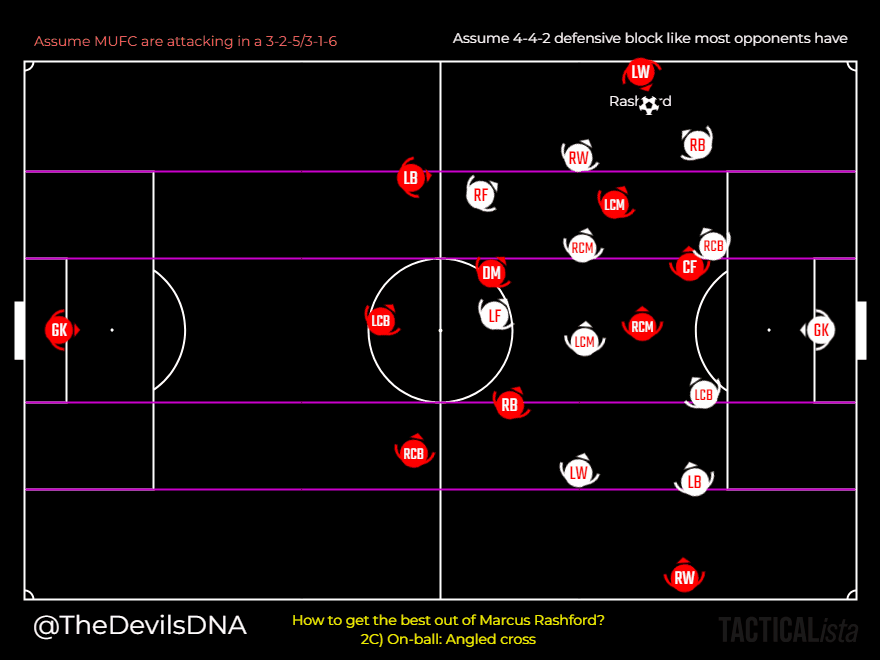
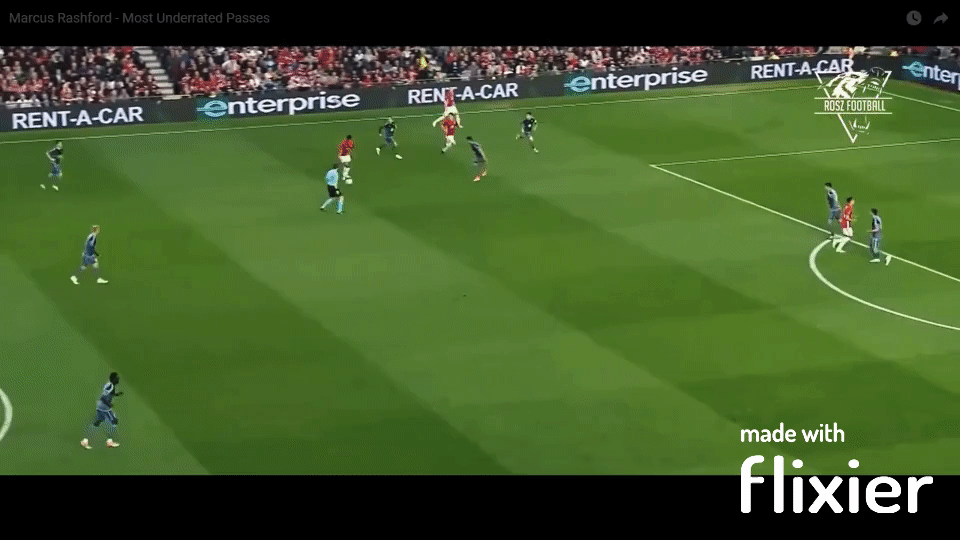
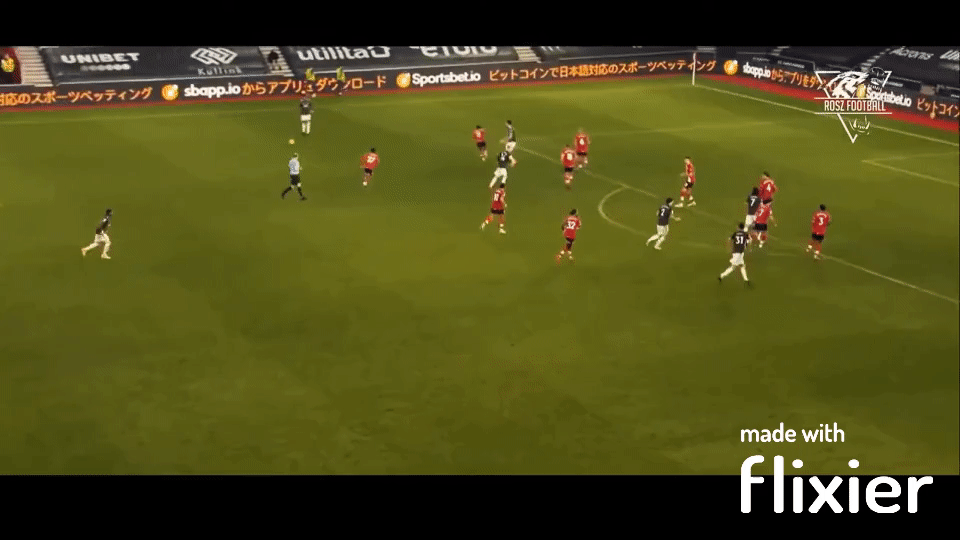
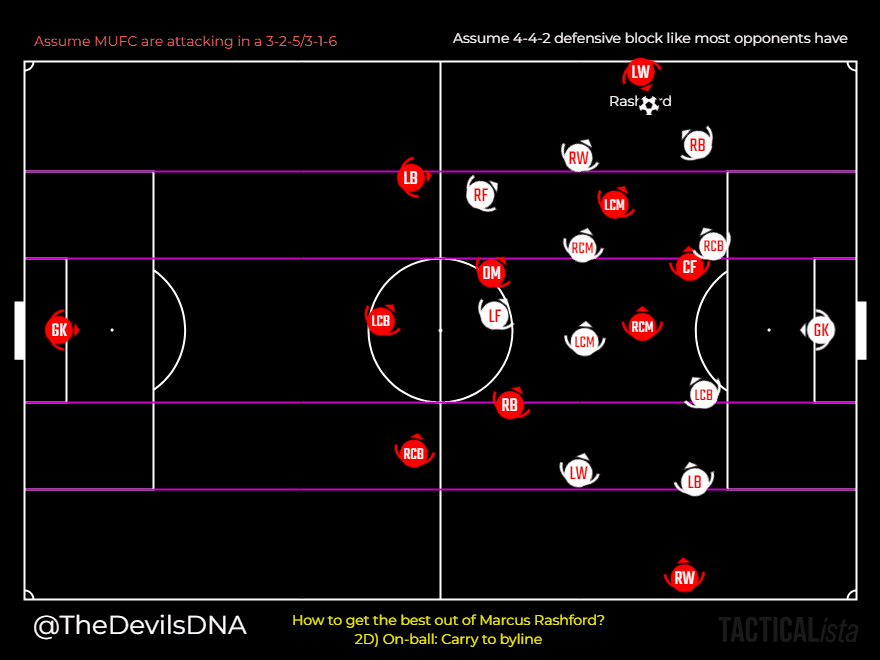
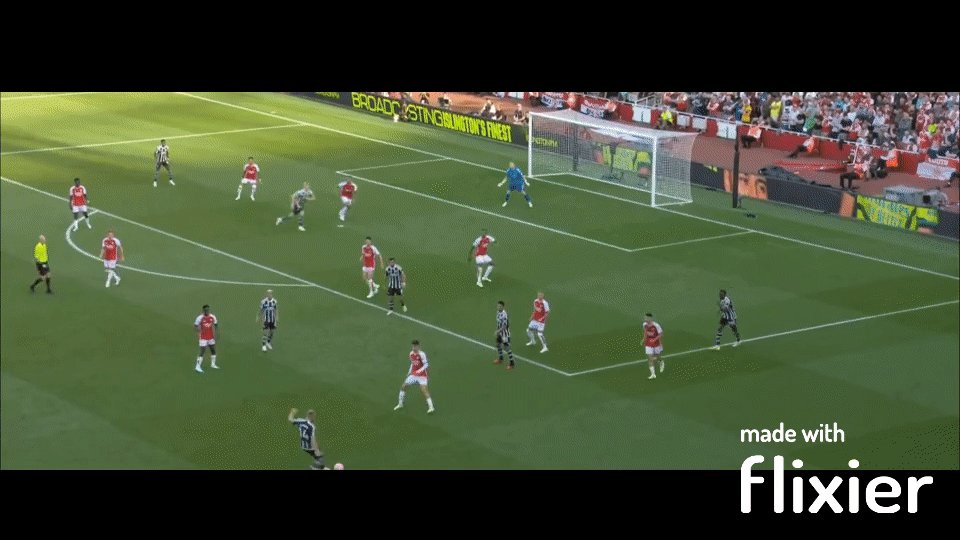
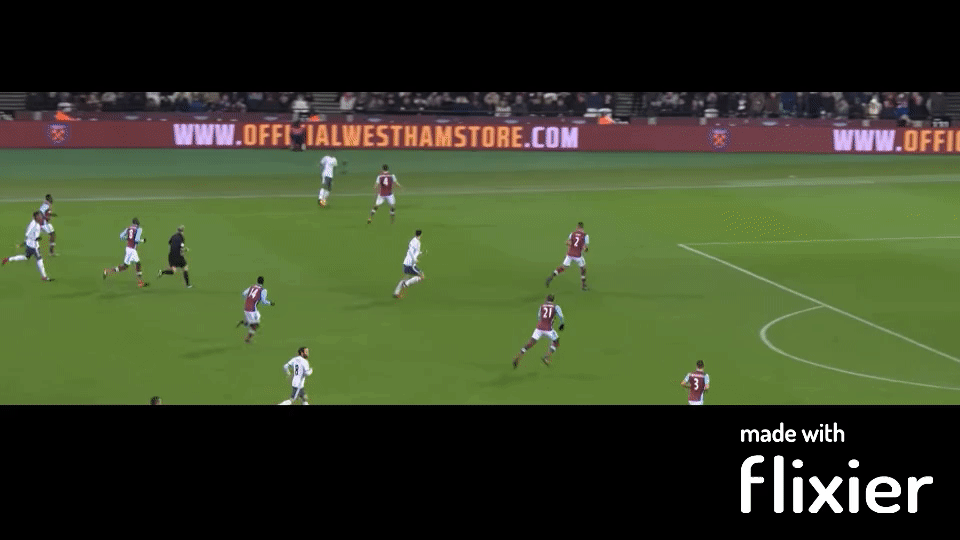
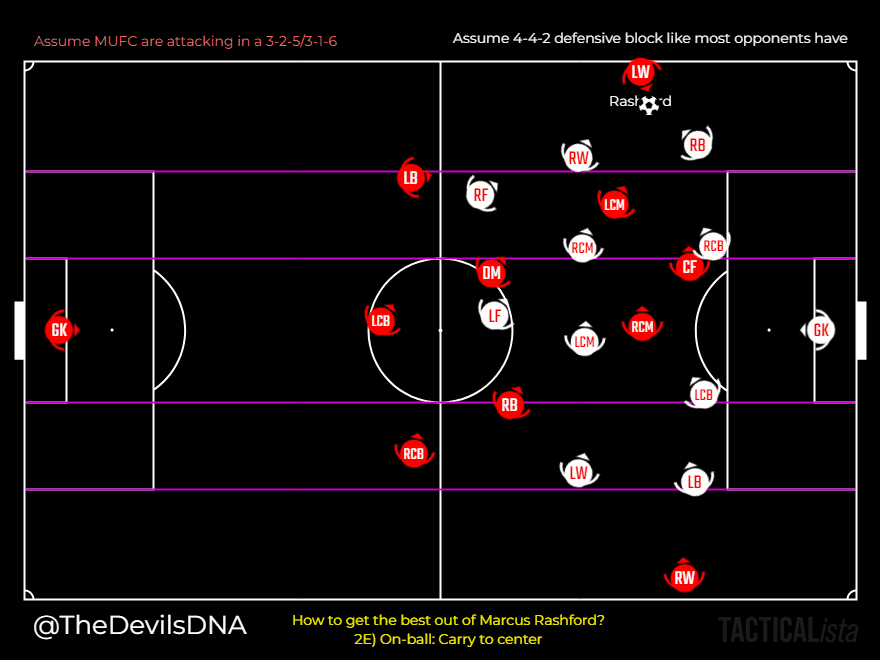
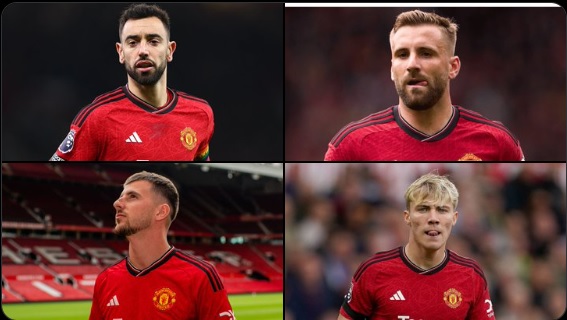
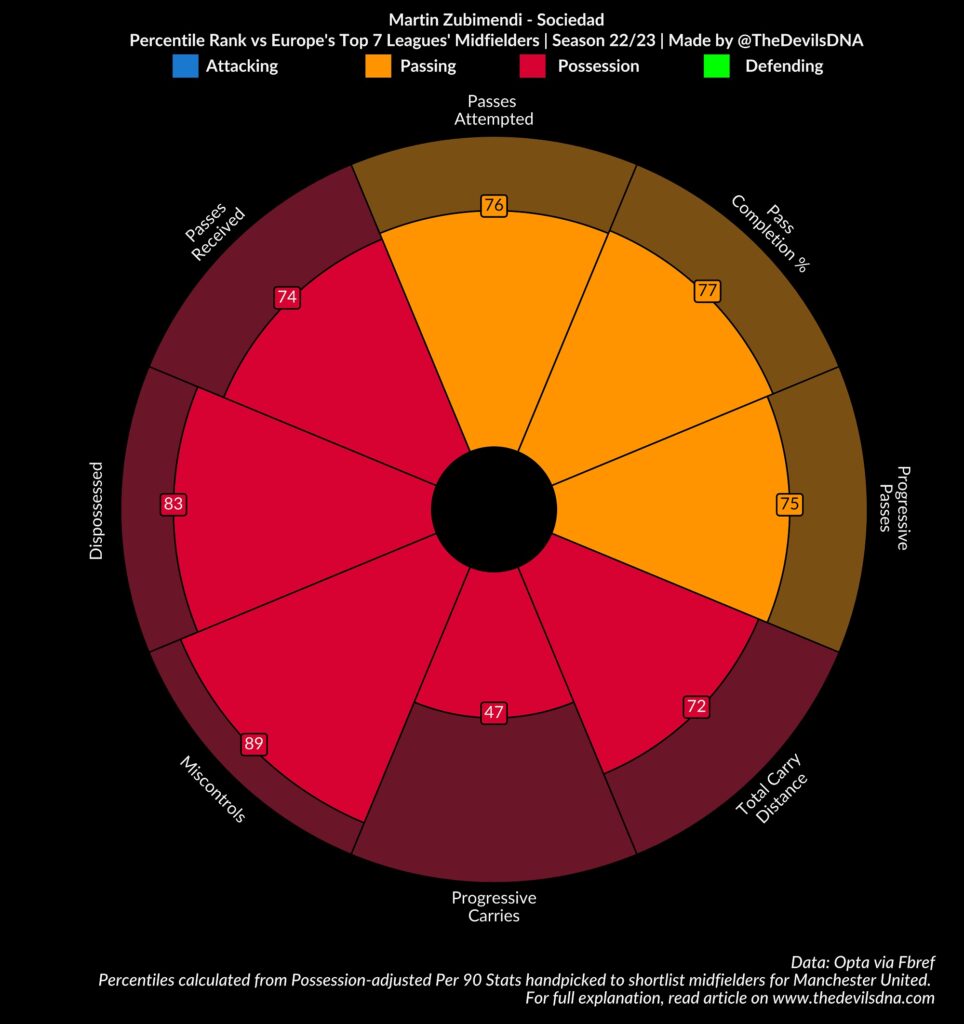

Recent Comments